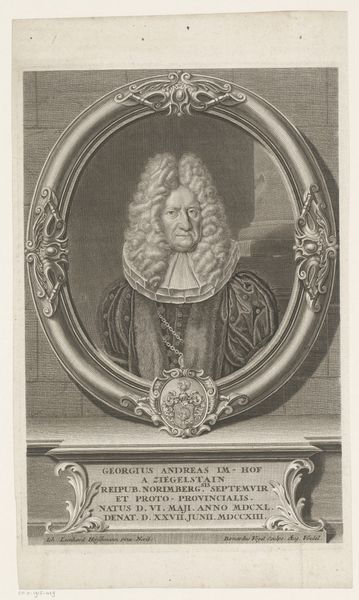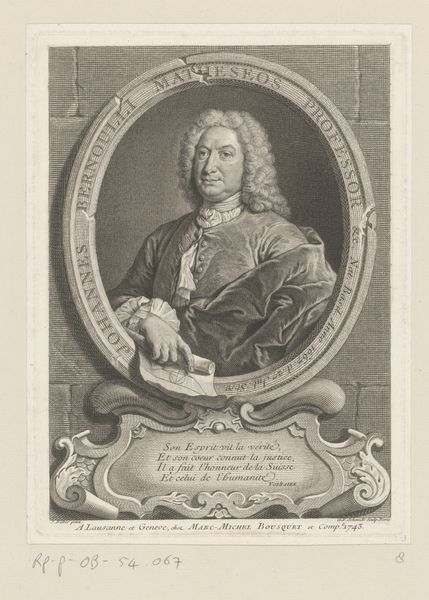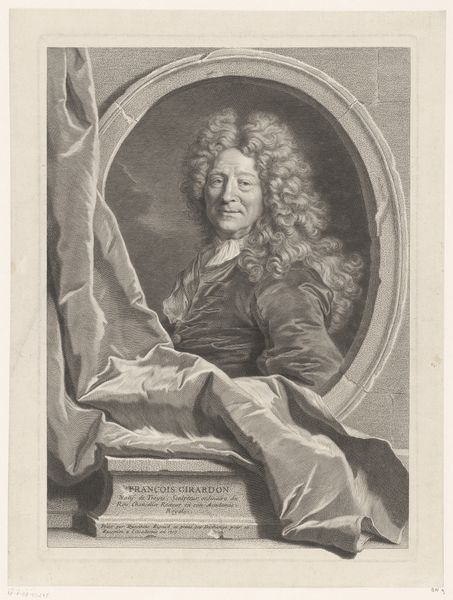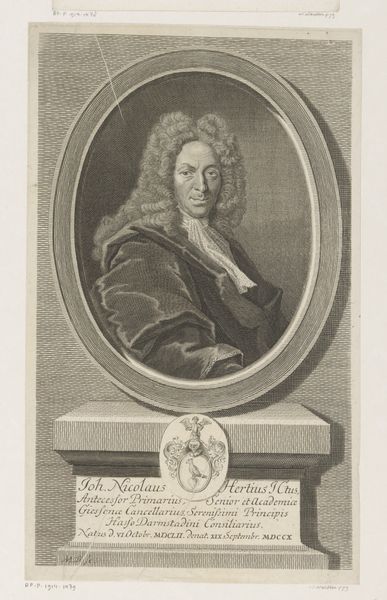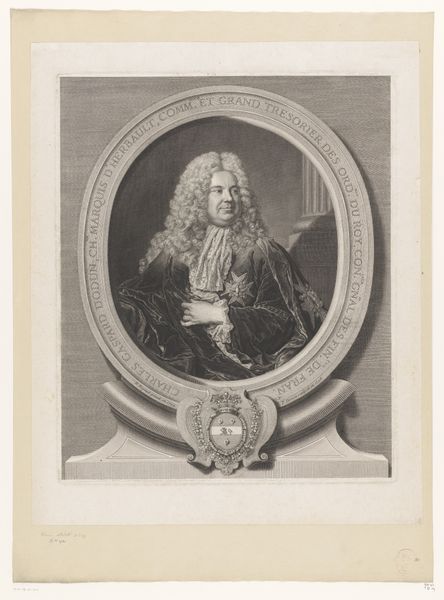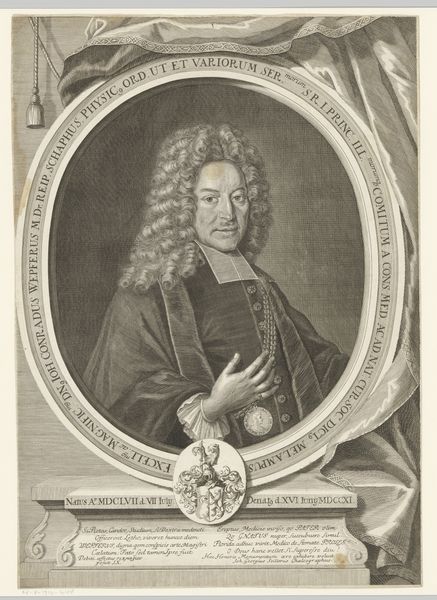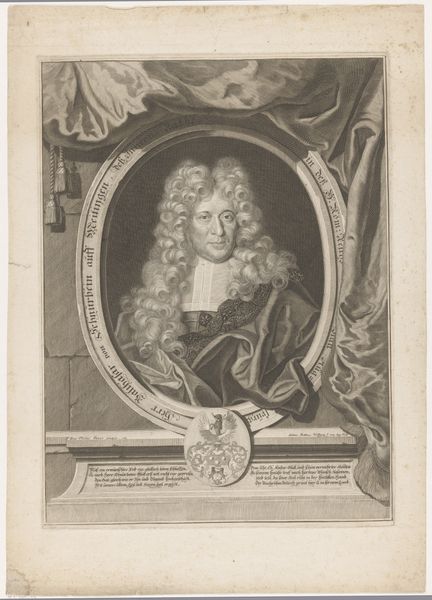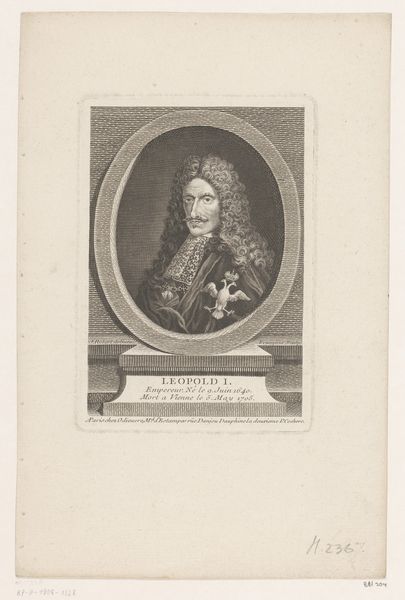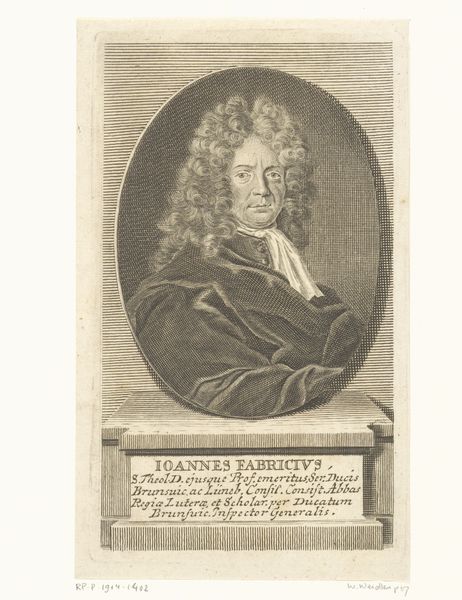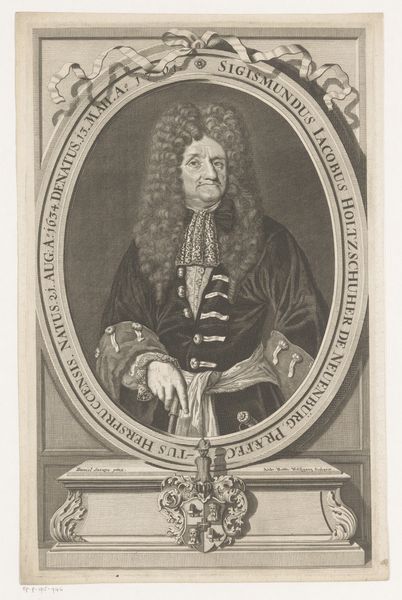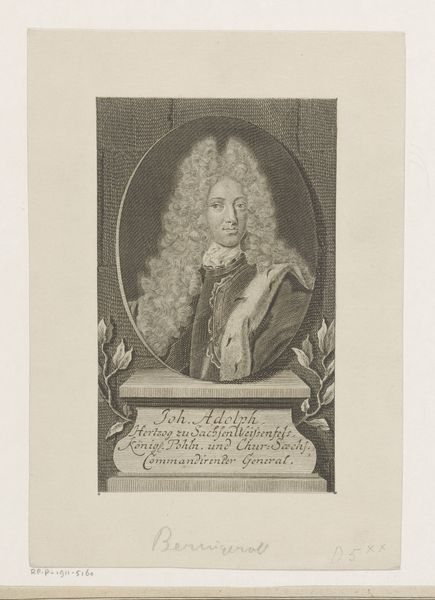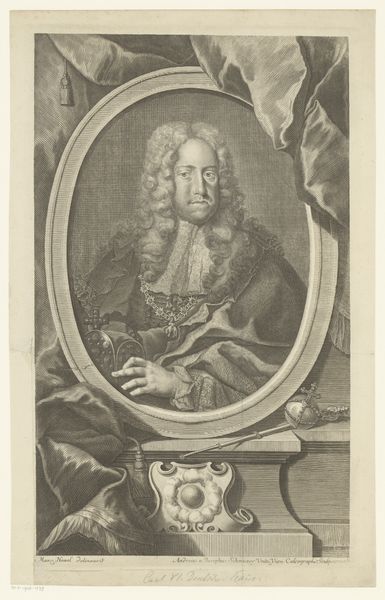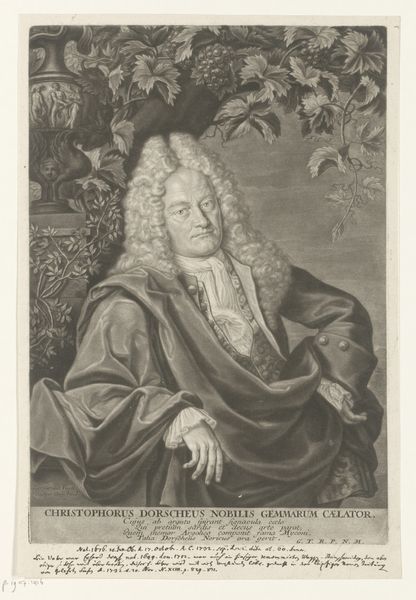
engraving
portrait
baroque
15_18th-century
history-painting
engraving
Dimensions: height 371 mm, width 260 mm
Copyright: Rijks Museum: Open Domain
Editor: So, this is "Portret van Claude Guy Hallé," an engraving by Nicolas de Larmessin III, created around 1730. I’m struck by how meticulously detailed the textures are, especially in the wig and drapery. What stands out to you most about the composition? Curator: Certainly. It is the formal arrangement of elements which invites close inspection. Consider the stark geometric frame surrounding the subject; its angularity deliberately contrasts with the curvilinear forms of Hallé’s wig and clothing. This opposition establishes a visual rhythm, guiding the eye. What do you observe about the use of light and shadow? Editor: I see how the light seems to highlight Hallé’s face and hands, bringing them forward, but the shadows also give depth to the folds of his robe. Curator: Precisely. The artist employs chiaroscuro not merely to represent form, but to articulate a carefully constructed spatial relationship. Note, too, the inscription beneath the portrait – it functions as an integral part of the design. How does its placement affect the overall balance? Editor: It anchors the portrait, giving it a sense of groundedness and formality. It also leads my eyes to his serene expression, so there's a hierarchy within the composition itself. Curator: Indeed. It is through the interplay of such elements that Larmessin achieves a refined balance between representation and formal abstraction. Editor: This gives me a new appreciation for the artistry involved beyond just the subject of the portrait. It's all interconnected! Curator: Precisely, and hopefully an appreciation of the artist's command of visual language.
Comments
No comments
Be the first to comment and join the conversation on the ultimate creative platform.
